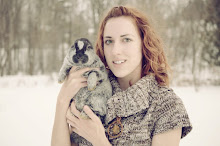Since man has been raising rabbits for meat and fur for more then two millennia one question often arises; how did they keep them? There were three main systems used historically.
1.) Rabbit warrens
2.) Rabbit courts or gardens
3.) Rabbit Islands.
Warrens: A warren was a walled or a fenced area that allowed the rabbits to burrow and live as "Wild Rabbits" some warrens spread over many acres. In fact in Norfolk England large tracts of land were said to be more profitable under rabbits then cultivation.
Warrens were often divided into different sections. One section was for rabbits to be taken as food and fur, one section was for rabbits raised to be deliberately set loose in the wild to be hunted for sport.
The warrens that kept rabbits for food and fur were a substantial source of income for their owners for many generations. The warrens that kept rabbits to be released for sport hunting continued right up until just after the 2nd World War.
Warrens were wiped out after the disease myxomatosis effected most of the rabbit population in the 1950's.
Rabbit Courts or Gardens: Although very similar to warrens the rabbit court was a much smaller affair. In the "court" the rabbits were allowed to run free within an enclosed area while a large degree of management was applied to control the production of stock. We know from historical records that rabbit courts had been employed in monasteries since before the 5th century, and it was in these courts that genetic selections began to take place as different colours an mutation occurred. If you want to pin point the history when the domestication of wild rabbits started you should look to the papal edict issued by Pope Gregory the Great in 600CE
Pope Gregory decreed that rabbits (more correctly the unborn young or pre-furred young) were not to be classed as a meat and therefore could be eaten by the monks during Lent. Thus the monks could adopt the Roman habit of eating unborn or newborn rabbits which were called laurices.
Since the rabbit was an ideal source of protein and the fur could provide warm clothing for the monks in their closed societies both these desirable features were doubtlessly being selectively bred in the the types of rabbits the monks kept, as well as one more important feature: Tameness.
Rabbit Islands: The raising of rabbits on Islands in a warren setting was easy; no walls, hedges, or fences needed. Most rabbit islands were very successful and their histories and effects of the isolation on a rabbit population have been the subject of numerous studies.
Pens: Some sort of pen (cage, or hutch) has been used to confine rabbits since the days of the Phoenicians, who took rabbits on their sea journeys as a self-replacing source of meat. Following Pope Gregory's papal edict of 600CE that monks particularly in France started the process of domesticating rabbits in a combination of rabbit courts and pens. With the pens the monks could selectively breed for size, colour, coat, or body shape. As well as genetic mutations that started to occur the Monks would keep the ones that appealed to them and continue to breed that mutation into future stock.
Friday, December 17, 2010
Subscribe to:
Post Comments (Atom)




No comments:
Post a Comment